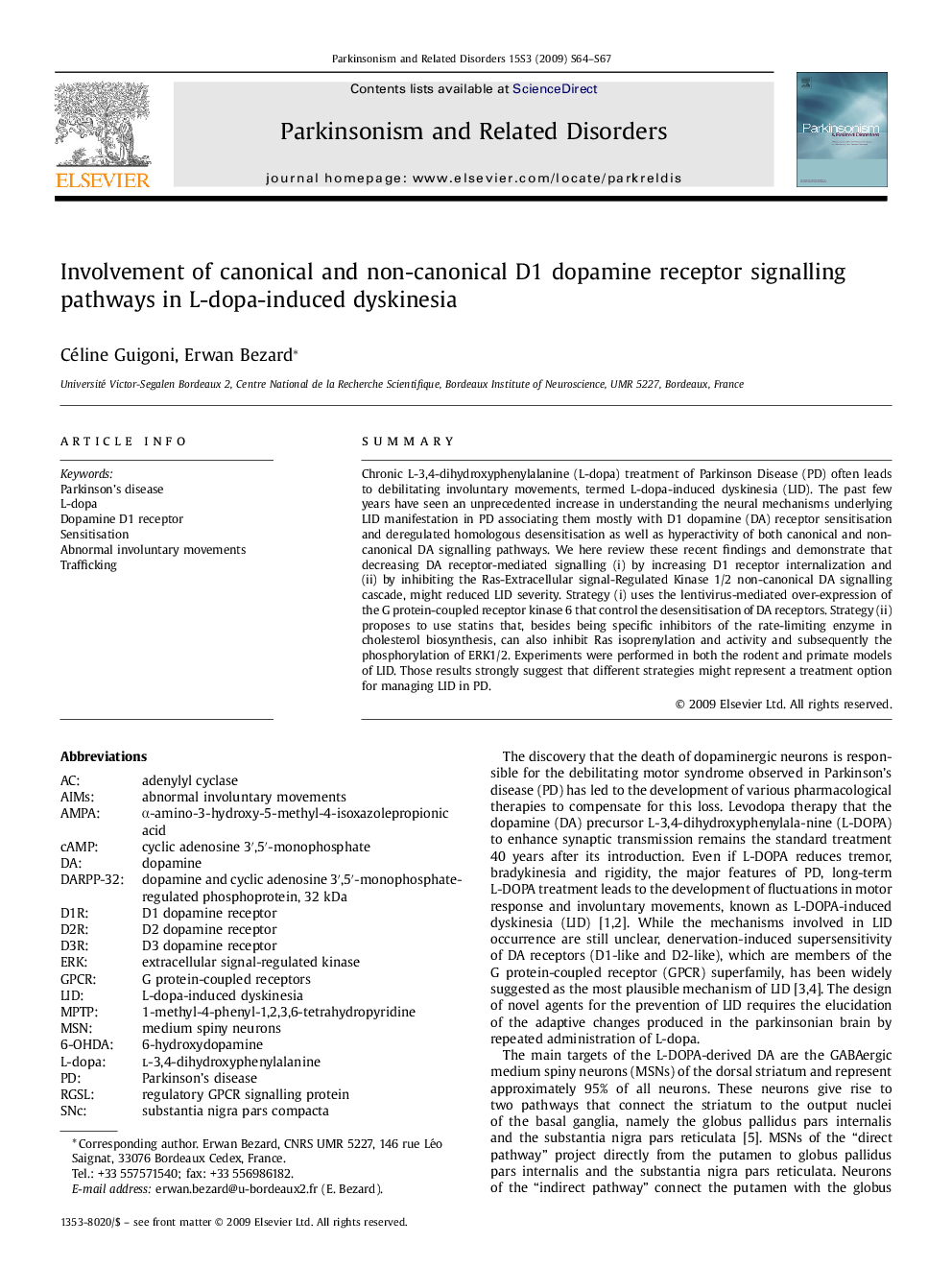| Article ID | Journal | Published Year | Pages | File Type |
|---|---|---|---|---|
| 1922037 | Parkinsonism & Related Disorders | 2009 | 4 Pages |
SummaryChronic L-3,4-dihydroxyphenylalanine (L-dopa) treatment of Parkinson Disease (PD) often leads to debilitating involuntary movements, termed L-dopa-induced dyskinesia (LID). The past few years have seen an unprecedented increase in understanding the neural mechanisms underlying LID manifestation in PD associating them mostly with D1 dopamine (DA) receptor sensitisation and deregulated homologous desensitisation as well as hyperactivity of both canonical and non-canonical DA signalling pathways. We here review these recent findings and demonstrate that decreasing DA receptor-mediated signalling (i) by increasing D1 receptor internalization and (ii) by inhibiting the Ras-Extracellular signal-Regulated Kinase 1/2 non-canonical DA signalling cascade, might reduced LID severity. Strategy (i) uses the lentivirus-mediated over-expression of the G protein-coupled receptor kinase 6 that control the desensitisation of DA receptors. Strategy (ii) proposes to use statins that, besides being specific inhibitors of the rate-limiting enzyme in cholesterol biosynthesis, can also inhibit Ras isoprenylation and activity and subsequently the phosphorylation of ERK1/2. Experiments were performed in both the rodent and primate models of LID. Those results strongly suggest that different strategies might represent a treatment option for managing LID in PD.
